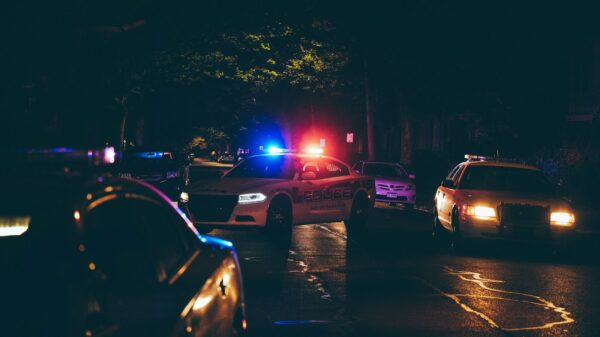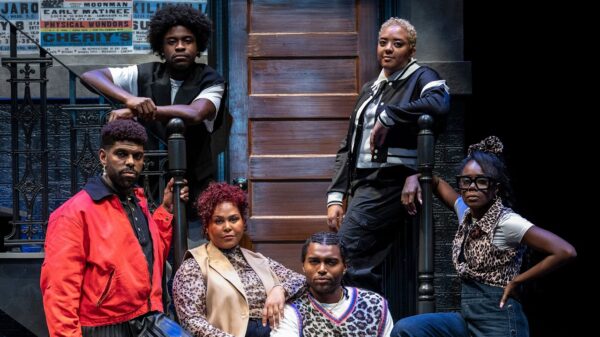
As the second semester springs forth, the Howard University film students are rising to action securing club members, internships and fans alike. By just the third week in the year, senior film major, Justin Morris, etched his name in the Howard history books after hosting the Midnite Ramble showcase; a tribute to the midnight ramble show era where Black people were only permitted into theaters to watch movies after dark under Jim Crow laws. The films shown were often from the years of 1910-1950 created by Black producers, writers and actors.
In the same vein, Morris selected six student films to be showcased intimately at the Landmark’s Atlantic Plumbing Cinema, just a block away from the university. On the night of Jan. 17, friends and family gathered in cocktail attire for light refreshments and a series of indie shorts focused on real raw Black stories. Please find a short synopsis and review of each project presented below:
“In 1619, the first North American slave ship arrived in Jamestown, Virginia carrying enslaved Africans a long way from home. “The Moon May Cry” explores how one Black American family, centuries later, have built their history combining the strength of the past with the possibility of the future,” said Hartman on the topic of her film. “It’s a beautiful thing to see that even though much has been taken, much has been created. Through centuries, our culture has been reimagined and reclaimed, and in my reality, this all starts within the family tree.”
I saw my aunts, my uncles, my cousins and extended loved ones in “The Moon May Cry” by Kai Hartman. The story she told resonated with the broken and belittled yet beautiful Black family experience through poetry, dance and color. Shades of sangria cascaded around the screen as stark movements from three people presented artistic expressions to the beat of an African drum. The black worn centralized the scene while the chlorophyll filled greenery embellished their belonging.
Quick cuts between the group sashaying to samba and rhythm juxtaposed with still pictures of family heirlooms and t-shirts serving as memorabilia reminded me that my descendants always had and will have two succinct and separate notions of home. Though our pigmented skin undeniably serves as a representation of our native roots in another land, our current culture is expansive. I watched as members of the Hartman family spoke affectionately about the customs created by Big Mama and Uncle Will who headed the family. The two not only passed on the Boddie namesake but established traditions that teach the value of family through an everlasting system of solemn and sometimes even silent support.
Each clip in the short uncovers a new understanding of how to be and become discovered by the five different generations featured. If you want to see a reflection of your authentic self or simply looking for an intimate selection of Black history, this is the perfect film. In this debut, Hartman has not only proved herself to be a prodigy but a genius with gumption and grace.
“The C.O.A. List” directed by Payton Mack celebrates a young woman breaking into adulthood amidst a group of close confidantes. The main character seeks to complete the last task on her coming of age checklist with fear and fun on the cusp of her 21st birthday. The soundtrack, party shots and creative lighting make this flick hard to forget. Resembling an episode of Girlfriends or Issa Rae’s Insecure, Mack is certainly a young professional on route to gaining her claim to fame.
Sexuality is often a shameful and under-discussed topic in the Black community, especially among women. To see an affectionate romance come to life on screen is even more rare. However, “dove”, directed by Darien Woodard, sets the scene for lesbian love seamlessly and without stigmas. The possibility of a relationship on the cusp of a close knit friendship creates a daunting, yet youthful sense of suspense for the audience. Nothing symbolizes young love more than a candlelit take-out dinner shared on a sofa while soft sounds of a new album fade in the background. The script and plot, in addition to the quirky self-talk narrated in the bathroom mirror, make this film all too relatable. Woodard is definitely a visionary far ahead of his time.
Up-and-coming sophomore, Alana Smith, shared critical public commentary in her film, “Forgotten”. She focuses on police brutality and the abuse of Black bodies in the shape of a documentary with an original monologue performed by Smith. The violent 2020 protest pictures juxtaposed with the group of Black women outside the government building really depicts the questionable standing of women of color in society. “To move forward as a country, we need to normalize these stories and conversations because justice isn’t served until all of us are protected,” Smith said.
Morris outdid himself by not only facilitating and hosting this event but also providing a short for screening as well. The motion picture entitled “Her” follows two young women who have a serial killer that continually makes inappropriate phone calls. The stranger is quite scary but seemingly far away. Historical horror films such as “Psycho” find themselves strategically placed throughout the short with poetic hints of allusion. It is evident that Morris has done his homework. In each shot, the hints of foreshadowing through objects is a framework that proves his understanding of the horror noire craft is well advanced.
“TIME: A Tale Of Reckoning”, directed by Ryan R. Hampton, is a comedic and visual treat. A Howard student and homeless man cruise the streets of Washington, D.C. as they share past tales and lessons with each other. Familiar names like Here’s the Scoop, Georgia Ave. and other staples of the Shaw neighborhood are featured.
The star, Mykel Brown, has been a champion for film students this semester. He started a petition to get more film scoring courses in the Cathy Hughes School of Communication. Along with Brown are other film students who are continually making efforts to better the program. Morris, Quincy Chester, and president of the organization, Sydney Rhone, have been overseeing the revival of the Howard University Film Organization. Founded in 1989, the group saw a decline in participation throughout the pandemic but came back strong with engagement programs during their film week from Feb. 7-11.
Overall, film students are beginning to see a change for the better this semester. Each of the events mentioned prove just how hard they toil to make sure that their work is recognized. It takes much time and dedication to create a production and these artists deserve to be respected for it. In the future, I hope to see more acknowledgement going to those in the film department and more collaborations with students in the Chadwick A. Boseman College of Fine Arts; both very special and talented groups.
Copy edited by Lauryn Wilson









